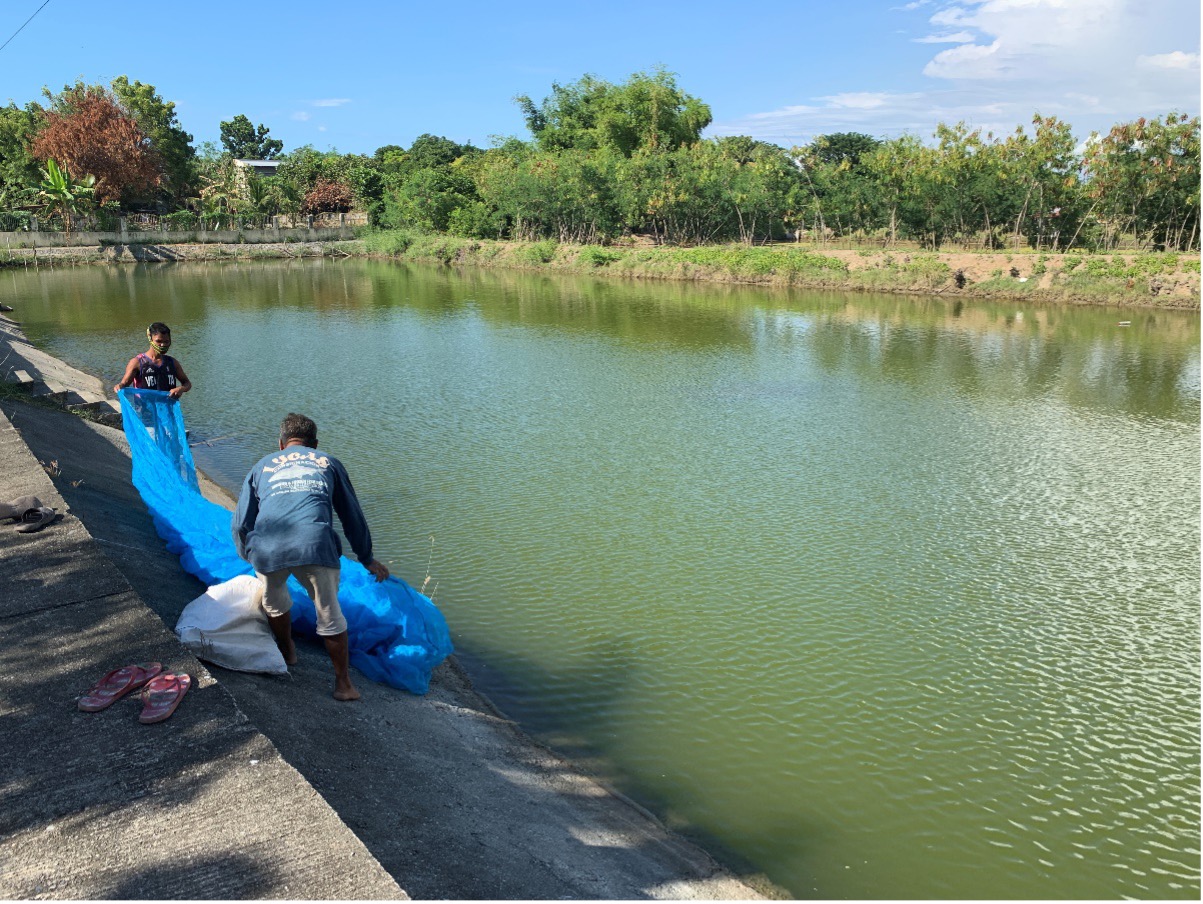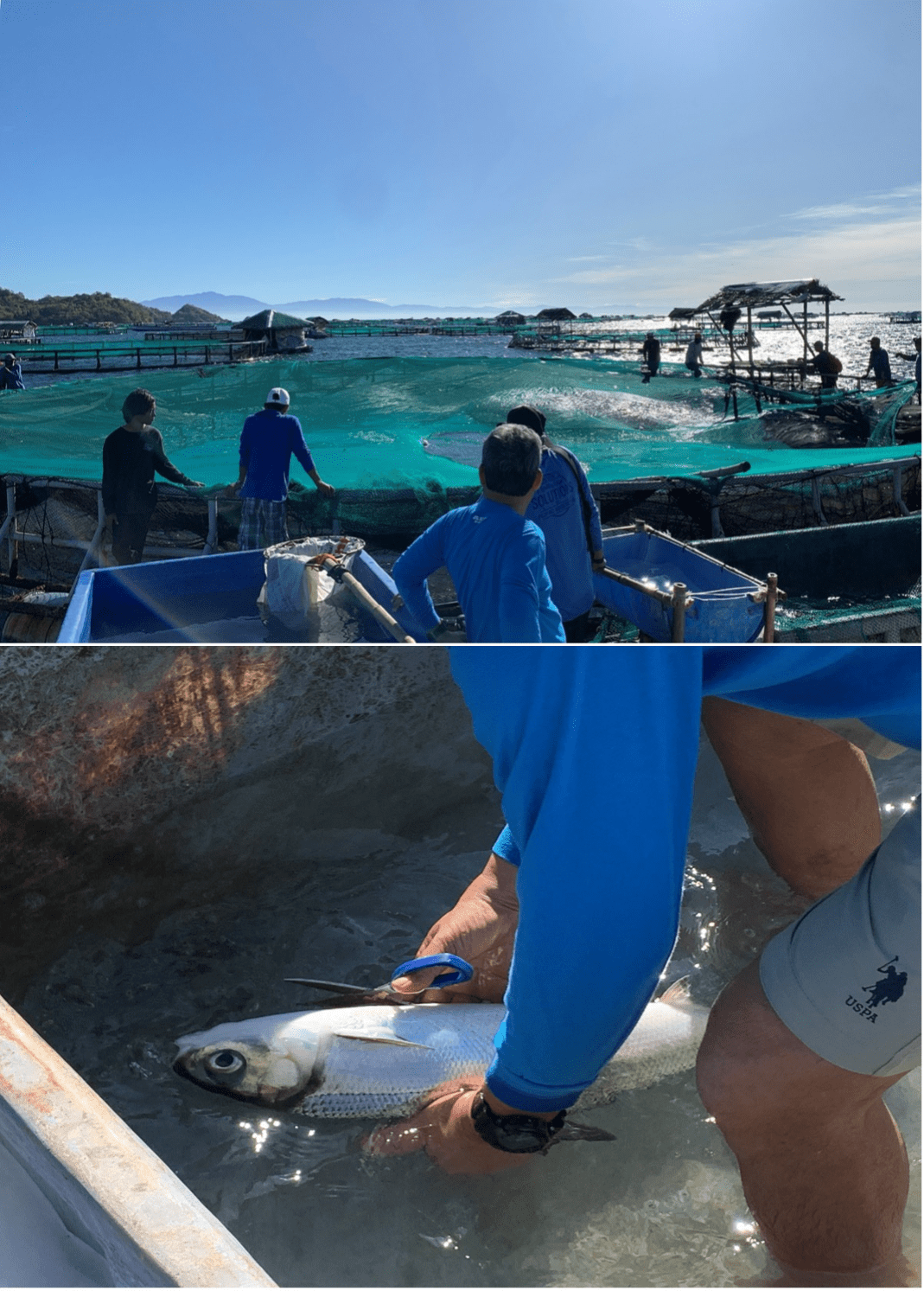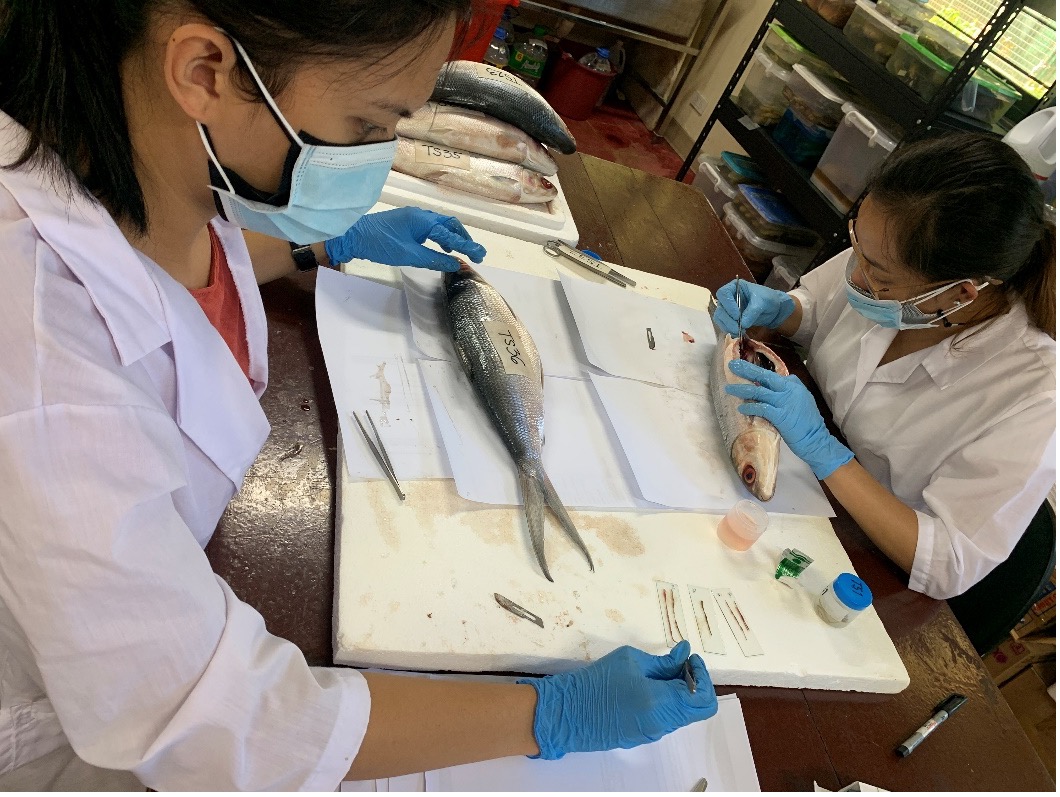
The milkfish (Chanos chanos) has been farmed for centuries in the Philippines, Indonesia, and in Taiwan. As an important species produced through aquaculture, much is known about its biology and aquaculture. However, many challenges have remained such as late maturity and fry insufficiency leading to importation. Researchers from the University of the Philippines Diliman (UP Diliman) are currently addressing some of these challenges to increase the Philippine milkfish production efficiency and long-term security using genetic technologies.
The on-going project, “Milkfish Broodstock Development and Management,” headed by Dr. Brian S. Santos of the UP Diliman–Institute of Biology, is funded by the Philippine Council for Agriculture, Aquatic and Natural Resources Research and Development of the Department of Science and Technology (DOST-PCAARRD). The project aims to develop a system for early detection of sex in milkfish by developing sex determination markers. This system would optimize sex ratio among breeders for increased production and reduce the cost of rearing breeders. These markers can also be used in downstream studies on breeding and maturity.

The project is under the program, “Enhancement of Milkfish Aquaculture Productivity through Genomics” led by Dr. Rachel June R. Gotanco.
Genetic monitoring of various hatcheries will also be conducted. The previous milkfish R&D program included studies that compared the genetic diversities between wild and hatchery-bred milkfish stocks and between Philippine and Indonesian samples. One of the hallmarks of the program was the development of microsatellite markers, which were first to be characterized for milkfish. This study is applying these markers for genetic characterization of milkfish stocks. Hatchery practices are also being documented and compared with genetic data to determine optimal practices for broodstock development and management.
Samples have been collected from a private hatchery in Dagupan, Pangasinan and from Feedmix, Inc. in Sual, Pangasinan. Phenotypic sex was determined through cannulation. DNA was extracted from these samples and would be used for reduced representation sequencing. From these, markers would be developed, and sex phenotypes would be differentiated over a large fraction of the genome by genome-wide association study. This method aims to create a genetic marker system for sex determination specifically for milkfish.

Using the microsatellite markers previously developed by the project leader, samples from other stocks were also analyzed for genetic monitoring. PCR and AGE conditions were optimized. Polymorphisms among the milkfish stocks were characterized.
Lastly, histological analysis of gonads of milkfish specimens obtained from various markets was conducted. The analysis of genetic differentiation among sexes identified through gonadal anatomy would be performed.
Through this project, it is hoped that additional microsatellite markers for milkfish would be developed and the novel markers could be used for stock enhancement and marker-assisted selection to boost the Philippine milkfish industry.
